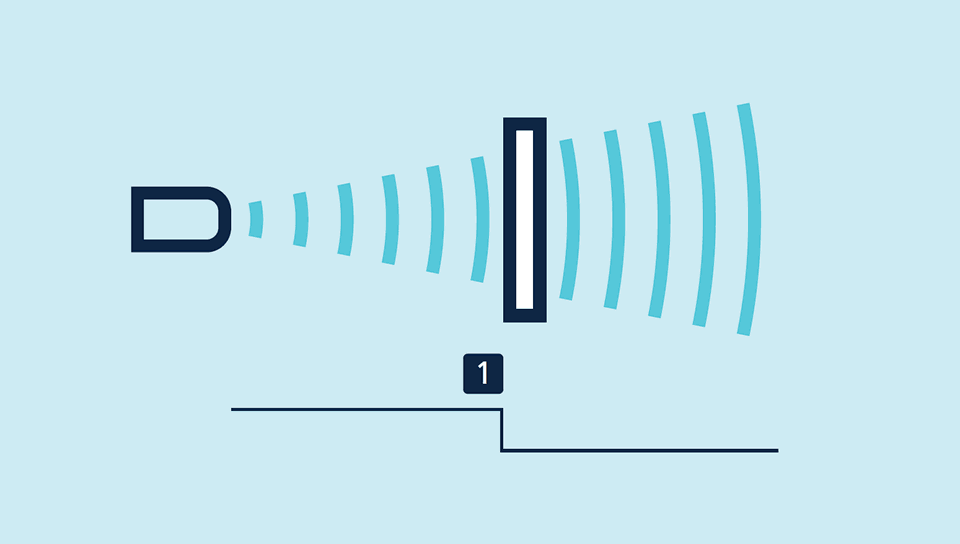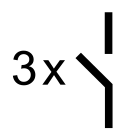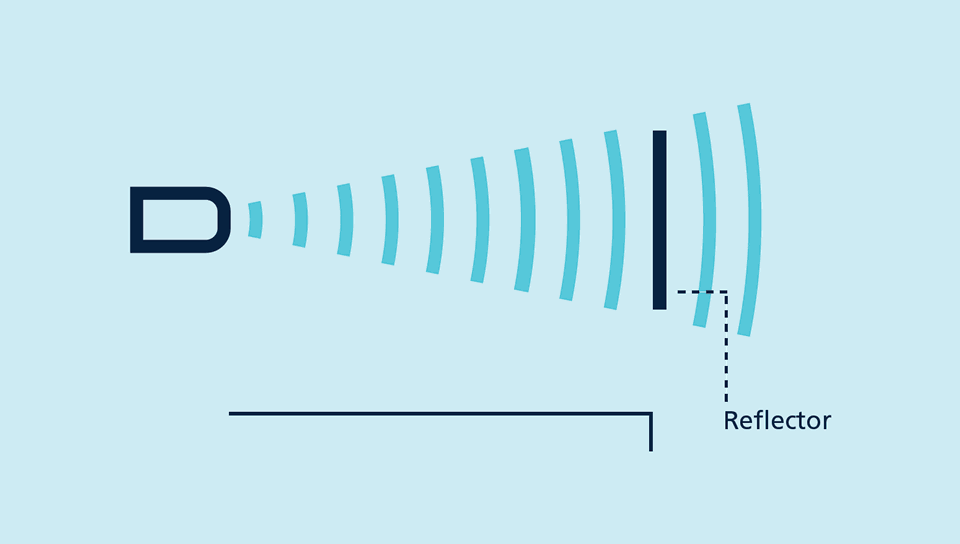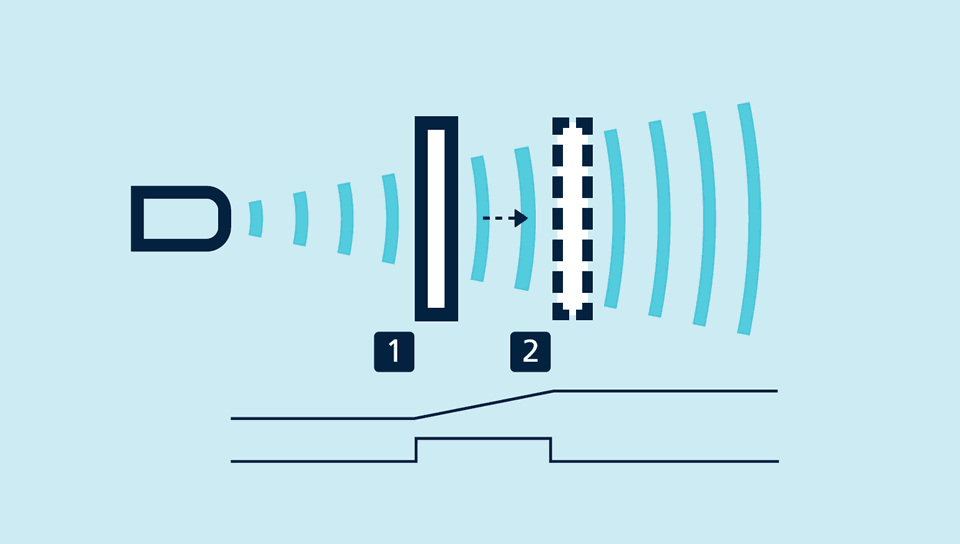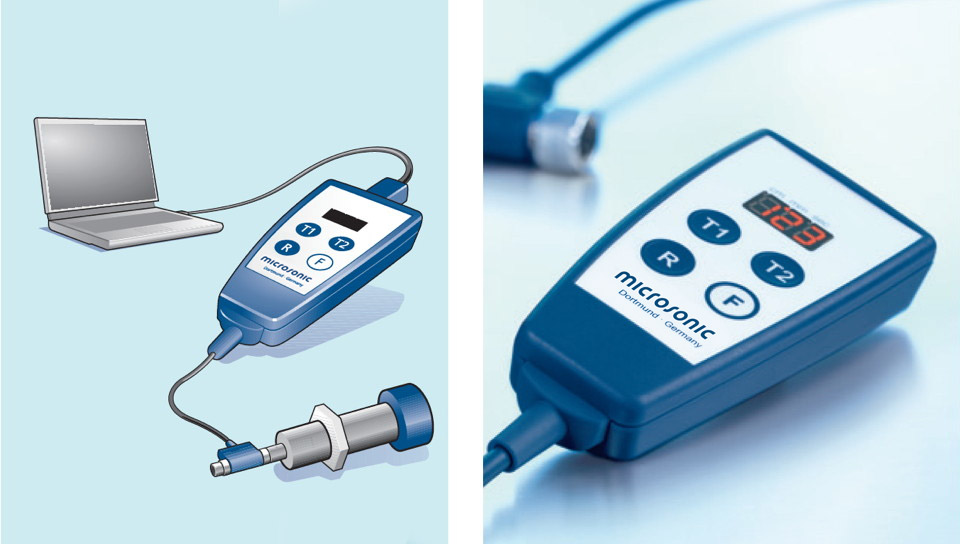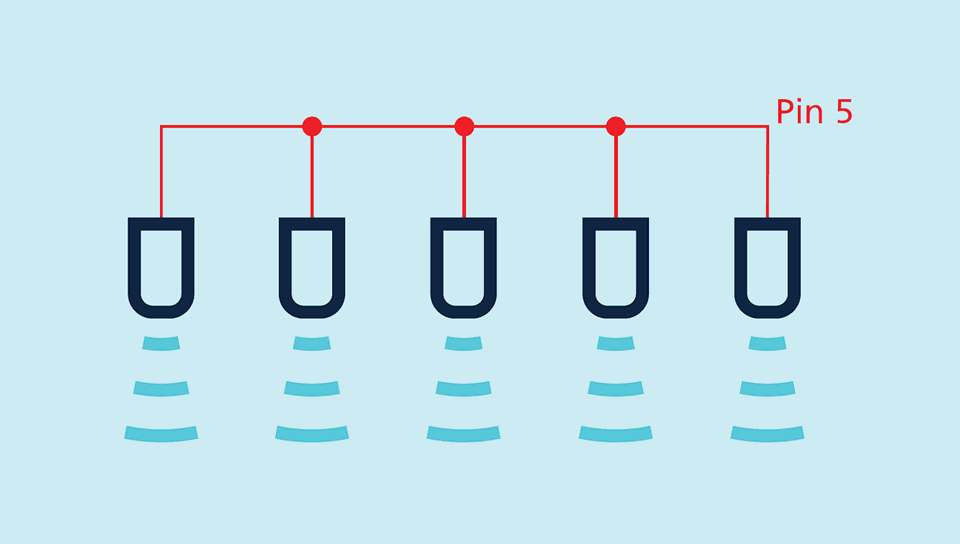This very solid construction
is fully made of metal from the M30 housing to the M12 circular connector. Since the sensors do not contain any operating elements or signal lamps, they are especially suited for application under extreme ambient conditions with high mechanical loads for housing and plug connector. The sensors are available in five detection ranges and cover a measuring range of 30 mm up to 8 m.
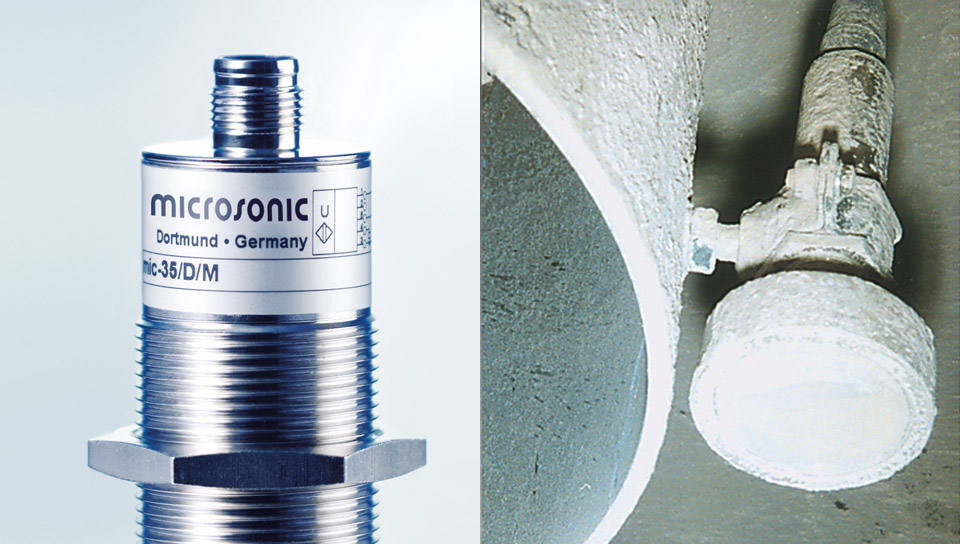
M12 metal circular connector (left) and operation under rough conditions (right)
Two output levels
are available for all five detection ranges:
 |
1 pnp switching output |
 |
1 analogue output 4–20 mA and 0–10 V |
Sensors with switching output have three operating modes:
- Single switching point
- Two-way reflective barrier
- Window mode
Teach-in of a single switching point
- Place object to be detected (1) at the desired distance
- Apply +UB to pin 5 for about 3 seconds
- Then apply +UB to pin 5 again for about 1 seconds
